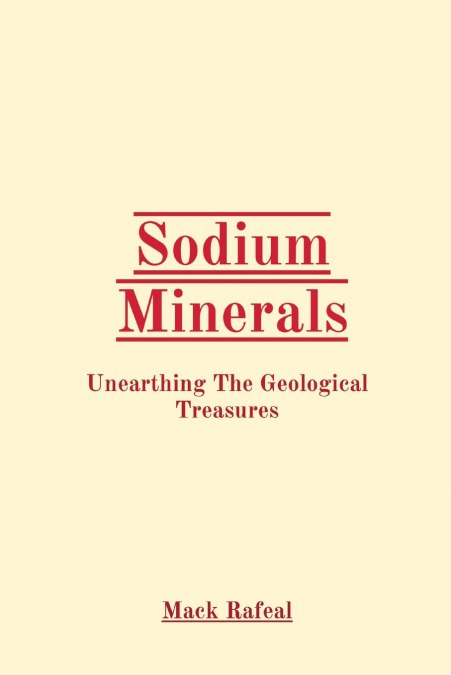
 Librería Perelló (Valencia)
Librería Perelló (Valencia)
 Librería Aciertas (Toledo)
Librería Aciertas (Toledo)
 El AlmaZen del Alquimista (Sevilla)
El AlmaZen del Alquimista (Sevilla)
 Librería Elías (Asturias)
Librería Elías (Asturias)
 Librería Kolima (Madrid)
Librería Kolima (Madrid)
 Donde los libros
Donde los libros
 Librería Proteo (Málaga)
Librería Proteo (Málaga)
Sodium minerals, the geographical fortunes concealed underneath the World’s surface, assume a critical part in both regular cycles and human progress. These minerals, rich wellsprings of sodium, one of the fundamental antacid metals, are dissipated across the globe, ready to be uncovered and used for different modern, agrarian, and mechanical purposes. The essential wellspring of sodium minerals is underground stores, frequently found in sedimentary rocks like halite (rock salt) and trona. These land arrangements result from the dissipation of old oceans and lakes, abandoning concentrated stores of sodium compounds. The extraction of sodium minerals includes mind boggling cycles of mining, penetrating, and refining, requiring a cautious harmony between natural manageability and asset use. One of the most plentiful sodium minerals is halite, a translucent mineral generally known as rock salt. Halite stores are vital for preparing our food as well as for modern applications like de-icing streets and assembling chlorine and harsh pop. Trona, one more huge sodium mineral, is dug for its sodium carbonate content, which finds applications in glass creation, water mellowing, and different substance processes. Past their modern applications, sodium minerals contribute essentially to horticulture. Sodium is a fundamental supplement for plants, and certain sodium minerals act as regular composts, upgrading soil fruitfulness and advancing harvest development. Understanding the land dispersion of these minerals is imperative for manageable farming works on, guaranteeing ideal soil wellbeing and yield efficiency. Besides, sodium minerals assume an essential part in propelling innovation. Sodium compounds are essential parts in the development of different materials, like earthenware production, cleansers, and drugs. The investigation and extraction of sodium minerals consequently become necessary to mechanical progressions, driving advancement in different ventures.